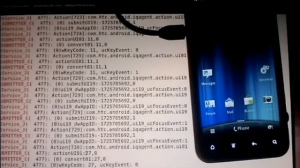The Death of Innovation
With the holidays, my sister and nephew visiting and some other things going on for me this week, I decided to take the week off and repost one of my favorites (from Feb 2010). Hope you like it! To all my new readers, welcome! This will be new to you. Happy Holidays!!
It’s happening. Innovation is dying. Not the act of creating or introducing something truly innovative—the word itself. We are killing the meaning of it. True, the dictionary is as lazy as the rest of us—defining it merely as the introduction of something new. But innovation is more than that. Something that is truly innovative makes you say “wow.”
Don’t believe me? Did you notice Apple’s words introducing the iPad? “Our most advanced technology in a magical and revolutionary device at an unbelievable price.”
Why didn’t they call it innovative? Because innovative is like poison ivy at summer camp. It has spread all over the place, except it doesn’t make anyone want to scratch anymore.
Google innovative and you’ll see what I mean. There are innovative cell phone rate plans, innovative insurance agencies, innovative banks, innovative savings accounts, innovative computer workshops, innovative plays made by innovative athletes…I could go on and on.
Companies now have Chief Innovation Officers, Heads of Innovation, and, my favorite, a Senior Brand Manager, Innovation & Business Development. The job listing for this last position states (and I’m not kidding), “…is a very strategic innovation & business development position in our [type of] business requiring a dynamic innovation marketer.
Agree with me yet?
Apple does. They know innovative is tired and worn out. That’s why they called their new product “revolutionary.” Even though I don’t forsee corporate Heads of Revolution or Chief Revolutionary Officers, I give us three years (maybe two) before we beat the crap out of that word too.
Telling us your product is innovative (or revolutionary) seems forced. Besides, isn’t the crowd the ultimate judge?
If your product doesn’t make us say “wow,” it’s not innovative. And if you told us it was, you’ve just lost our trust—and probably our business too.
So, go ahead, be innovative. But don’t tell us. Show us. And, hey, try being relevant, convenient, efficient and effective. That all works too.





You must be logged in to post a comment.